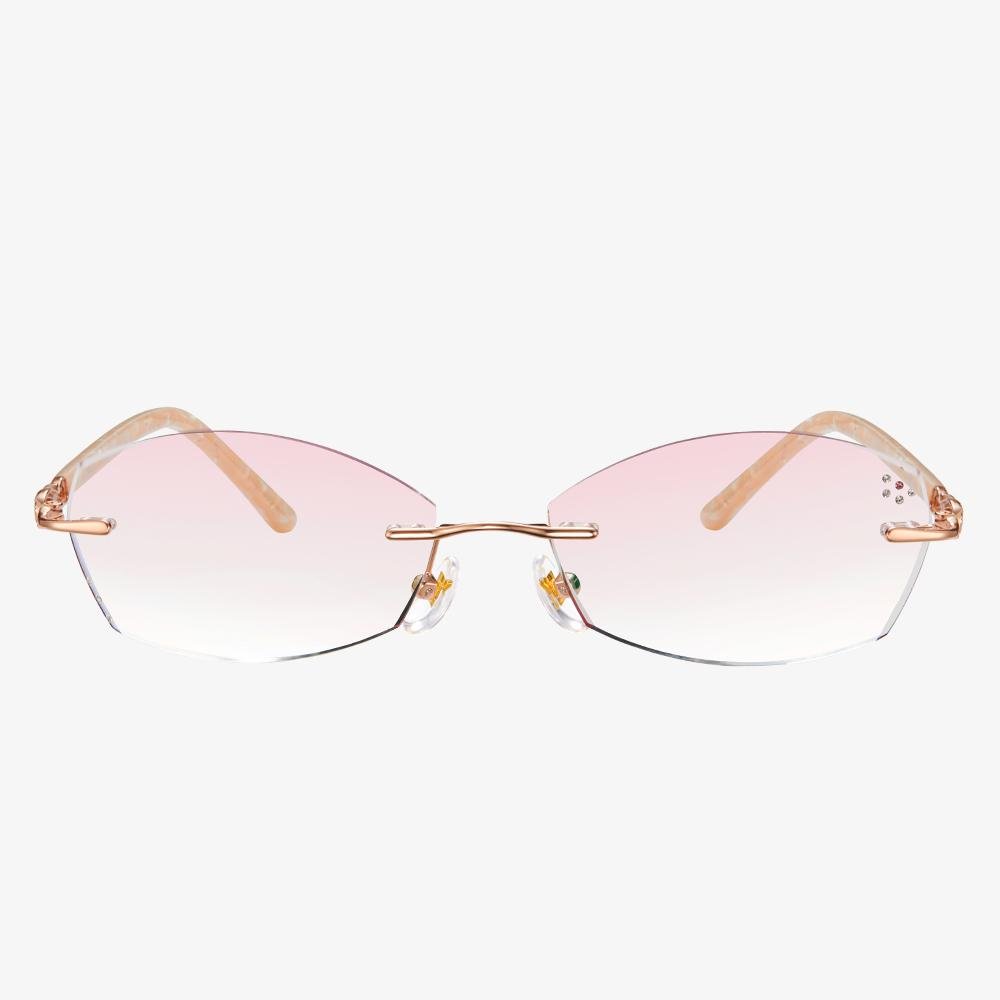Benefits of Blue Light Glasses
In this section, we will show you the benefits of blue light glasses.
- Relieve eye discomfort with blue-light blocking glasses. Excess device usage can lead to computer vision syndrome or digital eye strain. Blue light glasses can enhance your focus and reduce eye strain, resulting in making your eyes feel less tired and improving productivity. Another way to reduce eye strain is to make sure you take regular breaks from the screen.
- Blue light glasses can affect your sleep. Blue light has a high energy frequency that can increase alertness and delay the body’s release of melatonin, which helps induce sleep. In general, you had better not use blue light devices one to two hours before sleep. Blue light glasses can reduce the impact of blue light, enabling you to use your devices before bed and still get a good sleep.
- Blue light glass can help reduce the likelihood of Age-Related Macular Degeneration. AMD is a leading cause of blindness. Blue light blocking lenses can help avoid or delay this condition by preventing blue light from impacting your eyes.
Of course, besides those benefits, there are some other benefits of blue light glasses. For example, blue light glasses can relieve headaches.
Eyeglass World
Eyeglass World has in-store LABS in every location, so most prescriptions are available on the same day. If you are looking for upgraded lenses, finished sunglasses, or other special lenses, Eyeglass World can handle these special options at home and get them back to you the same day! Many optical locations do not provide such quick service.
Why Are My Progressive Lenses Blurry?
So, why are my progressive lenses blurry on sides? It can be caused by a lot of reasons, and we will list some of them.
The strength of progressive lenses is the factor that leads to initial peripheral blurriness. Progressive lenses tend to be blurry on the sides because each lens promotes three fields of vision. In addition, peripheral blurriness or haziness is a sensation that typically develops because more than one lens has been incorporated into one lens. The wearer also might feel as if he or she is moving from side to side.
After learning what may cause progressive lenses blurred, so how can you adapt to the progressive lenses? Therefore, in the following section, we will show you how to get used to progressive lenses.
Anti-fouling Coating
The lens coated with anti-reflection film is pretty prone to stain, and the stain will affect the transmittance of the lens. Microscopically, the anti-reflection film shows a porous structure, therefore, the oil is very easy to soak in it. The solution is to coat a layer of anti-fouling film with anti-oil performance on anti-reflection film. The film is very thin and will not change the optical performance of the anti-fouling film. The material is mainly fluoride. There are two processes, one is the immersion method, one is the vacuum coating method (the most commonly used).
Advantages Of TR90 Frames
- Lightweight. The weight is about half the weight of the plate frame, which can reduce the burden on the bridge of the nose and ears, and it is also comfortable to wear for a long time.
- Bright colors. Compared with ordinary plastic frames, the color of TR90 frames is even better.
- Impact resistance. The TR90 frame is extremely flexible, and its good elasticity can effectively prevent damage to the eyes caused by impact during sports.
Regardless of whether it is a sheet frame or a TR90 frame, they have their own advantages. You can choose them according to your requirements, Importantly, it is comfortable to wear and good-looking.
What is a progressive lens?
A progressive lens is a lens whose upper sides are used to see far, and the lower side is used to see near. The distance from the fixed distance power above the lens to the near power fixed below the lens does not change suddenly, but a gradual transition between the two through the gradual change in refractive power.
Standard progressive lenses are multifocal lenses with three observation areas, farsightedness, intermediate vision, and nearsightedness. Unlike bifocals, there are no visible lines between each viewing area. They have a seamless, invisible design, where the optical power changes 'gradually' throughout the lens. Many people confuse 'bifocal' or 'trifocal' with 'progressive' but remember that bifocals and trifocals have visible lines in the lens, while progressive lenses do not. Because progressive lenses have no lines in the lens, they are more popular multifocal lenses than bifocal lenses. However, is progressive lens good for eyes?
What Are Trifocal Glasses?
Trifocal glasses and no-line progressive lenses are multi-focal glasses, meaning that their lenses offer multiple correction fields. Whether you have been wearing multi-focal glasses for a while, or you have just begun to look at options for correcting vision after 40 years old, you may have heard the terms trifocal or progressive glasses.
Trifocal glasses have three different corrective lenses within one lens to offer you intermediate, distance, and near correction. Trifocal lenses look and perform similar to bifocal lenses, with an added viewing zone to help correct vision in the intermediate field, and two visible lines where the viewing zones change.











































